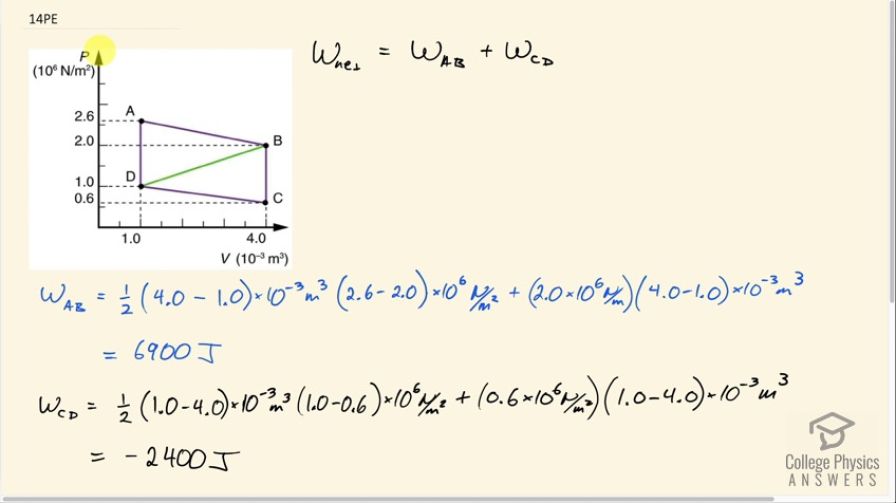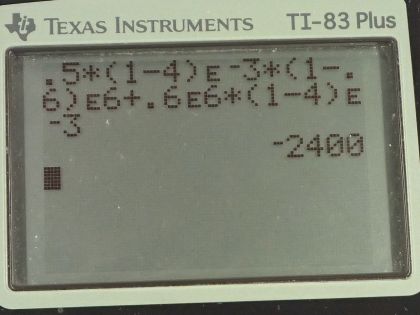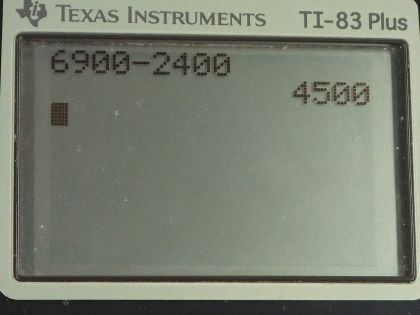Question
Calculate the net work output of a heat engine following path ABCDA in the figure below.
Final Answer
Solution video
OpenStax College Physics for AP® Courses, Chapter 15, Problem 14 (Problems & Exercises)

vote with a rating of
votes with an average rating of
.
Calculator Screenshots
Video Transcript
This is College Physics Answers with Shaun Dychko. We are going to calculate the net work done starting at point A to B to C to D and back to A in this pressure versus volume diagram. So the only sections that where work happens is going from A to B and then again from C to D because that's when volume is changing so you have to be moving horizontally to have volume changing and therefore be doing work. These pieces going from B to C are vertical... they are isochoric and also A to D which is to say that the volume doesn't change and there's no work being done. Okay! We are going to find the work done from A to B and then that's gonna be a positive number because volume is increasing and then we'll find the work done from C to D which will be a negative number since volume is decreasing and the work done between these two points is the area underneath that curve. So from A to B, this is the area and that's the work done and then from C to D, we are gonna calculate this area and we'll add those areas together so to speak. I mean this area from C to D will be negative and so in fact we are gonna be subtracting this from the total here... in other words, we are gonna be finding the area enclosed by this curve. Okay! So the area from A to B then and I am doing a bit of shorthand here because I don't wanna do too much writing so I am writing 4.0 minus 1.0 both of those are multiplied by 10 to the minus 3 so I'm factoring the 10 to the minus 3 outside of the brackets here. So we need to find the area of this little triangle and this can be one-half times its base which is 4.0 minus 1.0 times 10 to the minus 3 cubic meters multiplied by its height which is just this part here 2.6 minus 2.0 times 10 to the 6 newtons per square meter. And we'll add to that the area of this rectangle here that's gonna be 2.0 times 10 to the 6 newtons per meter squared because that's the height of this rectangle and then multiply by its length which is 4.0 minus 1.0 times 10 to the minus 3 cubic meters; this is a work of 6900 joules. Then to figure out the work done from C to D, we need to find the area of this little triangle which is one-half times 1.0 minus 4.0— I'm doing that in order to make it negative so the final volume minus the initial volume— so it's gonna be ending at 1.0 cubic meter and then starting at 4.0 times 10 to the minus 3 cubic meters I should say. So we find that change in volume and then multiply by this small pressure difference which is 1.0 minus 0.6 times 10 to the 6 and then add to that the area of this rectangle. So that's 0.6 times 10 to the 6 is the height multiplied by 1.0 minus 4.0 times 10 to the minus 3 which is negative 2400 joules. So the net work done then is the sum of these numbers which works out to 4.5 times 10 to the 3 joules.


